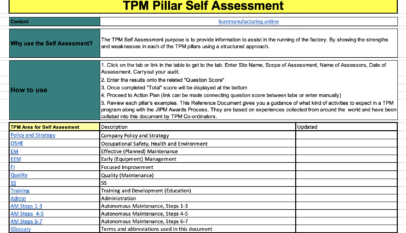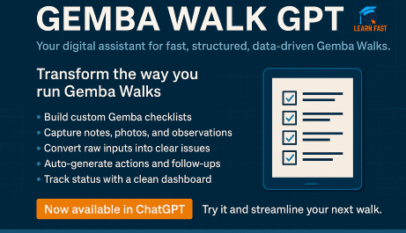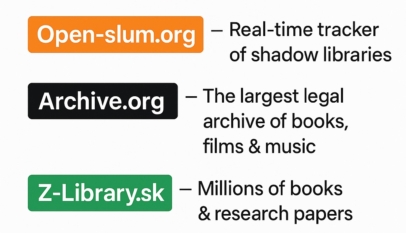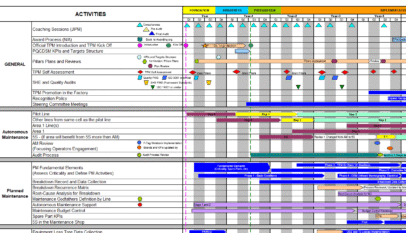Autonomous Maintenance
TPM Pillar Self Assessment
5S Autonomous Maintenance Early Equipment Management Education and Training Focused Improvement Manufacturing Support Planned Maintenance Quality Safety, Health and Environment TPM World Class Manufacturing
The TPM Self Assessment’s purpose is to provide information to assist in running the factory. By showing the strengths and weaknesses of each TPM pillar using a structured approach.
Read More »Detailed Autonomous Maintenance (AM) Master Plan. Steps 1 – 5
General Activities Setup Facilitator Practice sessionDevelop Minor Stop benchmark by lineCreate a standard Activity Board format and roll it out across the plantCreate audit templates for each stepSet up a feedback loop for Breakdowns (BD) to AM inspectionsDevelop skills matrix for pilot line teamAutomate Cleaning Inspection Lubrication (CIL) standardsInvolve operators…
Read More »Example of Food Manufacturing site review
5S Autonomous Maintenance Early Equipment Management Education and Training Manufacturing Support Planned Maintenance Quality Safety, Health and Environment World Class Manufacturing
Master Plan Show the results for the main objectives with consistent benchmarks and targets – Breakdowns, Minor Stops, Quality Defects and ZERO loss time accidents.Highlight why the Site needs TPM. “TPM is not the objective; it is the way to deliver the objectives.”Each pillar must have key indicators to link…
Read More »The 3 Tools of TPM
Autonomous Maintenance Focused Improvement Planned Maintenance Quality Safety, Health and Environment TPM TPM Introduction Training World Class Manufacturing
The technical facilitator will act as a liaison between the AM Pilot Team and those responsible for completing any technical work (be it mechanical, electrical, engineering, etc.). This will allow one point of (technical) contact for each team.
Read More »














